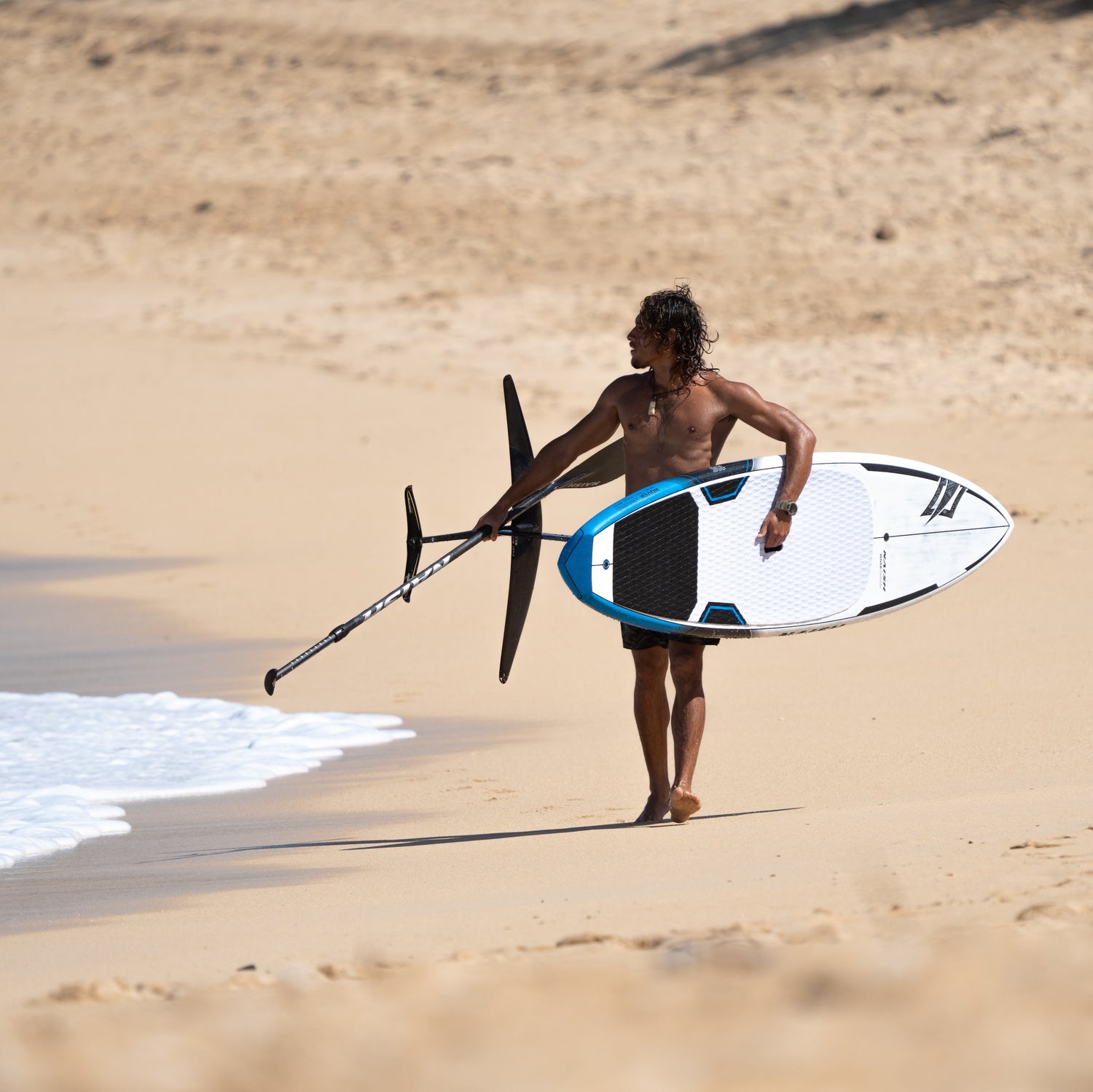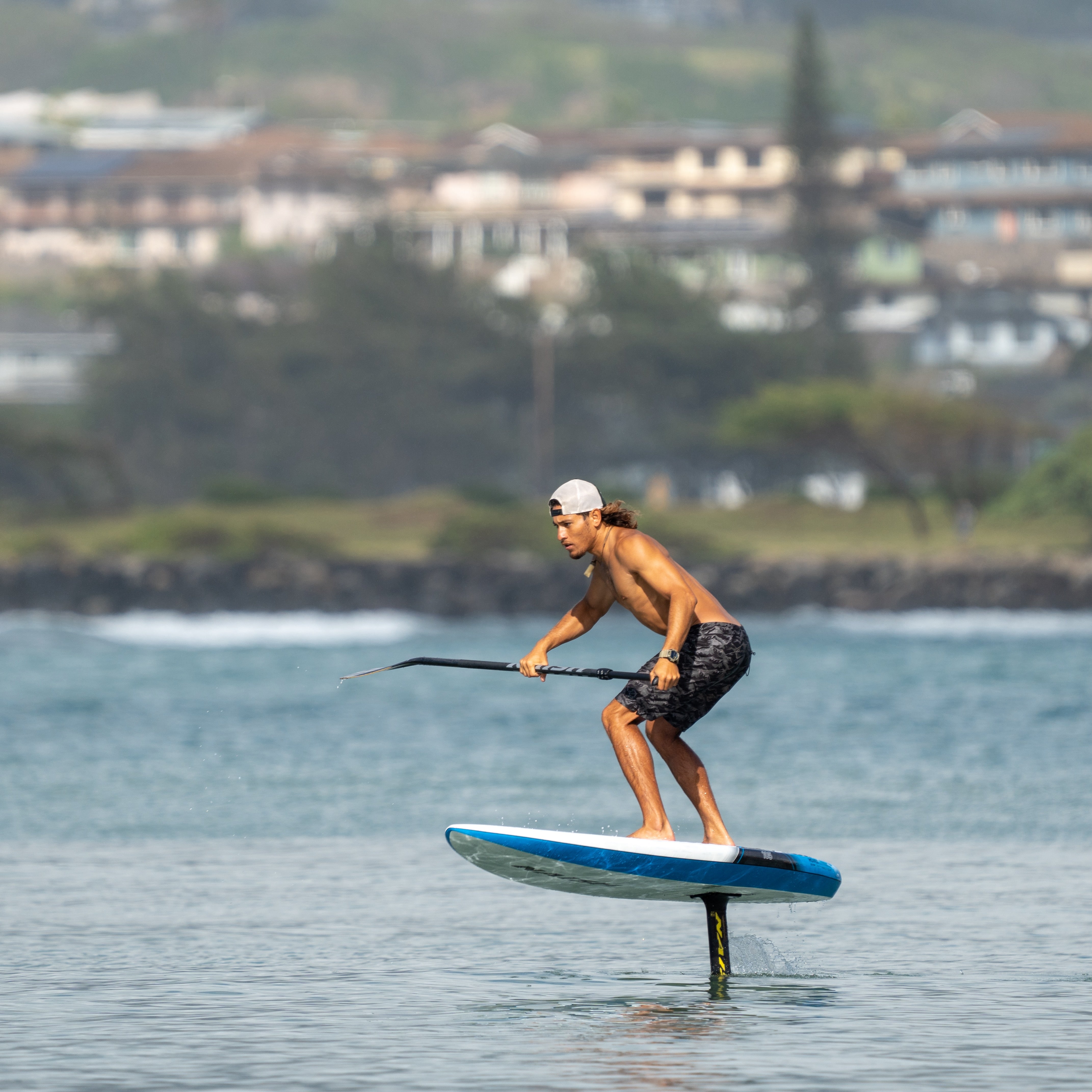
Mastering SUP Foiling: Progression I - Gearing Up & Paddle Practice
Progression Series by Brandon Scheid
The sport itself is not new.
People have been doing downwind SUP runs for a while and people have been hydrofoiling for a while. It's the joining of two sports: stand-up paddling and foiling. In the light of winging, we realized that with very little power, we can get up on a foil and then ride bumps without the power of the wings. So some people decided, how about having no wing at all? How about I just paddle myself up on foil? That started catching on in certain places around the world: Maui, France, the Gorge, and now it's catching on everywhere. People are doing these runs all over the place because they realize that you don't actually need a breaking wave. You just need energy in the water - you need a favorable groundswell. When you can take advantage of that with the wonderful world of hydrofoiling, we now have these endless journey-style shreds. It's totally different. It's not a stay-upwind shred; it's like an adventure. It's a different mindset going into the sport, and you are so intimately free; you're connected to only the power of the swell. You're alone in the ocean, with just a paddle.

Get geared up.
Grab your Hover Downwind board. Next, you're looking for a short mast because you don't need to be super high off the water. Stiffness is key because the wing you're going to be using is probably a wide, higher-aspect wing. The stiffer the mast, the better the energy is transferred to the foil, and the better and more efficient your ride is. We’d recommend the Carbon HM. Next, grab your semi-complete setup. We’re well aware that there are many different options: high aspect, medium aspect, low aspect. You’re going to want a medium to high aspect foil with a lot of surface area - 1400 Plus. It’s hard to paddle yourself up on a foil. Give yourself some credit for getting up on any surface area foil. As you progress, you can downsize. The Jet HA will be your best friend. Lastly, you’re going to need a paddle. Check out the Carbon Plus for the ultimate in light weight, stiffness, and performance.

Learn to paddle in a straight line. Seems easy, right?
You’re going to want to start in flat water. Why? You need to know how to balance on this thing and paddle in a straight line, something that should be easy… Once you’ve found the perfect flat water spot, assemble your set up and mount your mast approximately in the middle. Adjust your paddle to be about the height of your head. Hop in and have a go at balancing, paddling, and climbing on to the board. Be careful not to kick that thing!
Paddle power and stroke technique are everything. Become a master of the “J-stroke” to keep your line going forward. Since SUP foiling requires paddling only on one side of the board, eventually the nose of the board is going to want to track that way. The J-stroke is the best way to keep your board going straight downwind and ready to catch the swell. Change the angle of the paddle so that the face is open to the board, then slightly pull towards the board on the catch before continuing into a normal stroke to initiate forward movement. The motion will feel like you are carving a small “J” in the water in front of you.
So now you’re in the water, paddling around in a straight line, getting comfortable on your set up. Ready to hit the bumps? Part II will have you covered.
NEXT TIME: Mastering SUP Foiling: Progression II - Your First Popups


